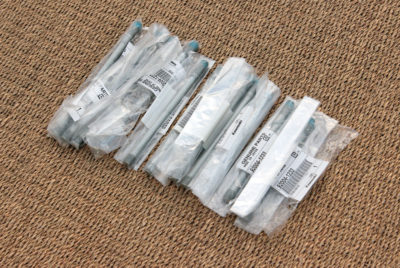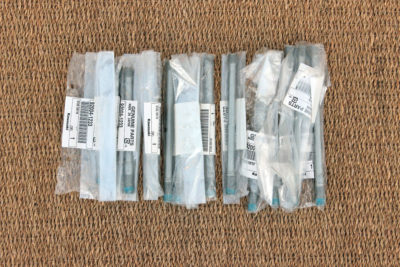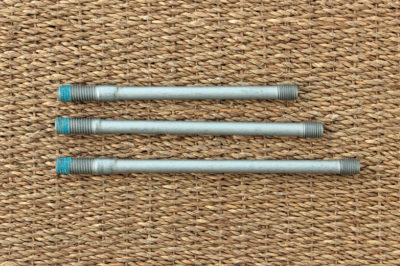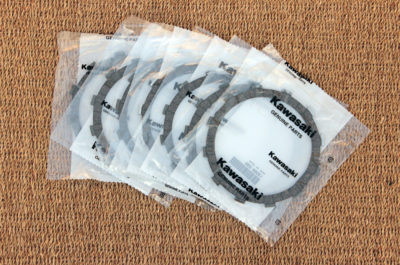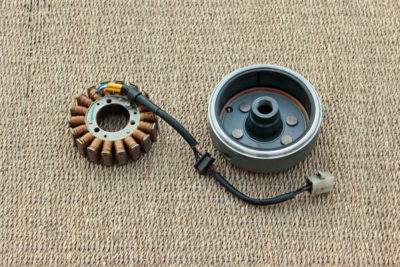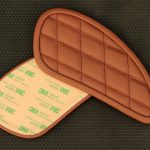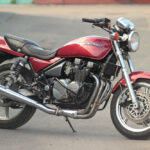Kawasaki KZ650 as well as KZ750 has 12 cylinder studs with M10 thread of following lengths: 4 studs x 153mm (part number 92004-062), 4 studs x 133mm (92004-1004) and 4 studs x 116mm (92004-1007). The shortest, 116mm studs now are not available not in USA nor in Europe. Taking to account this fact, for majority of people who decided replacing cylinder studs of their KZ there is no other choice, as to purchase aftermarket “heavy duty” studs like those made by APE. However such choice is not for me, as I see “small nuance”. This time it’s about how OEM and aftermarket studs are made: OEM studs have thread M10x1.25mm on top and M10x1.5mm on bottom part, but diameter of their bodies is reduced to 8mm:
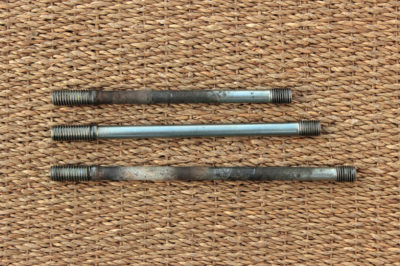 Such built is common for motorcycle cylinder studs; and it was designed to lessen load on thread in aluminum where lower ends of studs seat. Cylinder head of KZ tightened by steel nuts with 39Nm of torque. During engine work aluminum of cylinder block and cylinder head expands due to heat, thus increasing load on stud and studs threads. Be stud body of the same diameter as its thread, the weakest point of this system would be a thread in a crankcase. But with body of smaller diameter than thread that could slightly play under the load so threads in aluminum are quite safe even if cylinder head nuts are overtightened. Though APE studs might be great thing if you build turbo charged or high performance engine, in fact for case of mild performance engine like mine, they would be O.T.T. or simply said “overkill”. APE cylinder studs are claimed to be made of chrome moly steel and have rolled threads. In this case weakest point of system definitely would be studs threads in crankcase and overtightening of cylinder head nuts may cause wrecking of those threads. In my repair practice I have seen what overtightened hardware may do with thread in aluminum: it just extract the thread from aluminum body. Afterward you may see that thread as uneven cylinder of aluminum on the thread of bolt that caused havoc. You even could unscrew it from bolt and it holds together.
Such built is common for motorcycle cylinder studs; and it was designed to lessen load on thread in aluminum where lower ends of studs seat. Cylinder head of KZ tightened by steel nuts with 39Nm of torque. During engine work aluminum of cylinder block and cylinder head expands due to heat, thus increasing load on stud and studs threads. Be stud body of the same diameter as its thread, the weakest point of this system would be a thread in a crankcase. But with body of smaller diameter than thread that could slightly play under the load so threads in aluminum are quite safe even if cylinder head nuts are overtightened. Though APE studs might be great thing if you build turbo charged or high performance engine, in fact for case of mild performance engine like mine, they would be O.T.T. or simply said “overkill”. APE cylinder studs are claimed to be made of chrome moly steel and have rolled threads. In this case weakest point of system definitely would be studs threads in crankcase and overtightening of cylinder head nuts may cause wrecking of those threads. In my repair practice I have seen what overtightened hardware may do with thread in aluminum: it just extract the thread from aluminum body. Afterward you may see that thread as uneven cylinder of aluminum on the thread of bolt that caused havoc. You even could unscrew it from bolt and it holds together.
And tell you what: if I planned my engine as highly charged I would use APE cylinder studs. But I’d first update all crankcase cylinder studs’ threads by thread inserts. Sure, this work should be done very accurately, but it would solve the question of “weakness” of original thread in comparison with heavy duty stud: even simple helicoil will distribute load much better and for larger area of crankcase, than original threads.
However, combination of Wiseco K700 piston kit and KZ750 cylinder head is a mild performance set which gives no reason to make the work on thread, considering that all threads are perfectly intact. So APE studs weren’t my choice, I decided to stick to OEM studs. Surely, unavailability of shortest studs didn’t stop me. I just “looked further in the book” and found that Kawasaki ZR-7 has cylinder studs of the same dimensions: 153mm (P/N 92004-1232), 133mm (P/N 92004-1231) and 116mm (P/N 92004-1233). I ordered them and here they are:
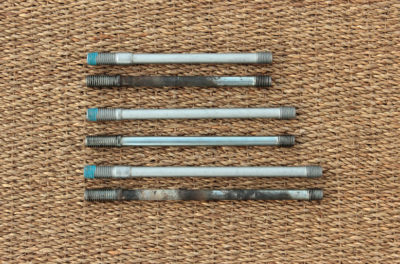 As you may see, lengths of studs and threads completely identical. Differences are as follows:
As you may see, lengths of studs and threads completely identical. Differences are as follows:
- ZR7 studs have thread locking agent factory applied to lower threads;
- Body of shortest and longest ZR7 cylinder studs are reinforced in lower parts.
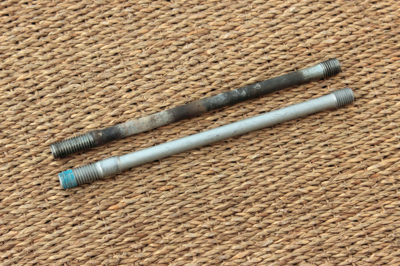
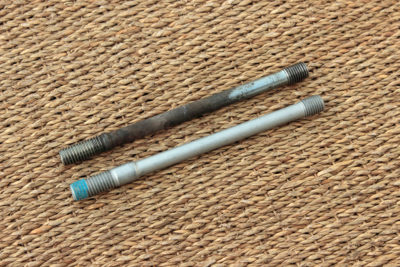 Two other lots from this post list are much simpler: it’s OEM clutch friction plates.
Two other lots from this post list are much simpler: it’s OEM clutch friction plates.
And Zephyr 750 alternator. As you may remember, I am about to use wiring, ignition unit and other electrical components form Zephyr 750, so it’s only logical to use Zephyr 750 alternator to avoid any issues with charging system. So I bought a rotor and a stator and here they are too:

